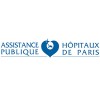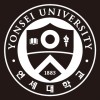
Selective Immunotargeting of Pathogenic CD8 T Cells of Type 1 Diabetes Patients
Type I DiabetesIt is well established that CD8 and CD4 T cells reactive against defined islet antigens are associated with initiation and progression of Type 1 Diabetes (T1D). In previous work, we have demonstrated that it is possible to redirect T cells against pathogenic T cells via chimeric peptide/MHC/CD3-zeta receptors in a peptide-specific manner and to prevent, or inhibit diabetes in NOD mice. In this study we intend to extend this approach to T cells of T1D patients. Working hypothesis: Beta cell-reactive CD8 T cells of human T1D patients can be immuno-targeted by their own gene-modified cytotoxic T lymphocytes (CTLs). Aims: Our major aim is to demonstrate, in a set of ex-vivo experiments, such immunotargeting with T cells derived from T1D patients at the Ziv Medical Center. To this end we will stimulate and expand autoreactive CD8 cells in blood samples of T1D patients and target them, ex-vivo, with genetically-reprogrammed CTLs which are present in the same blood samples.

Observation Study of Clinical Manifestation and Outcome in Chinese Patients With Pulmonary Vasculitis...
ANCA-associated VasculitisGranulomatosis With Polyangiitis2 moreThe purpose of this study is to observe the clinical manifestation, Lab findings including chest CT scans, pathological findings and outcomes in chinese patients with pulminary vasculitis.

Children With Diabetes at Risk for Heart Disease.
Diabetes MellitusType 11 morePatients with type 1 diabetes type 1 (DM1) have increased risk of death due to heart disease and stroke. These cardiovascular conditions (CVD) are the leading cause of death in patients with DM1 younger than 40 years of age and up to 35% of all persons with DM1 will die before age 55 from CVD. Strategies are needed to help identify adolescents with DM1 at risk for CVD so that interventions to prevent heart disease and stroke can be undertaken.

PETCT for Diagnosing and Monitoring Acute GVHD
Acute Graft Versus Host DiseaseGraft versus host disease (GVHD) is one of the major causes of death in patients undergoing allogeneic hematopoietic cell transplantation. 18F-FDG PET/CT (2-[fluorine-18] fluoro-2-deoxy-D-glucose, Positron emission tomography- CT) is a noninvasive technique that allows quantifying and precisely localizing 18F-FDG uptake in the entire body. 18F-FDG uptake is caused by increased local metabolic activity. In this study, we aim to evaluate and characterize the correlation between CT-PET findings in patients suspected to have acute GVHD, and the disease course.

Identification of Biomarkers Predictive of Worse Prognosis in Henoch Schonlein Purpura
PurpuraSchoenlein-HenochHenoch Schonlein Purpura (HSP), vasculitis of small vessels with deposits of IgA, is considered by many authors as the systemic form of Berger's disease (IgA-N). IgA-N is characterized by IgA1 deposits in mesangial areas associated with mesangial proliferation. These two diseases remain the leading cause of ESRD by primitive glomerulopathy in Western countries. In recent years, considerable progress has been made in understanding the pathophysiological mechanisms of IgA-N. However, only a high rate of proteinuria at one year or the presence of severe glomerular inflammation on renal biopsy remain predictors of long term renal function. Moreover, the high variability of HSP clinical expression, from few purpura skin lesions that evolve favourably spontaneously, to rapidly progressive renal failure, remains so far unexplained but suggests the existence of individual genetic susceptibility. In the first part of the study, we will study key factors based on physiopathological data obtained by our laboratory as well as by other groups. The second part of the study concerns genetic factors. Although the candidate genes that may confer a particular susceptibility to the disease, to progress to ESRD or respond to treatment are many, the genes involved in inflammation or controlling renin-angiotensin system are of particular interest. We will apply these results by studying patients with HSP showing three distinct phenotypes (HSP with isolated cutaneous purpura or associated with minimal or severe renal disease) at diagnosis and after clinical remission. The purpose of this study is to assess whether the phenotype at diagnosis is associated with the physiological markers and if one of them predicts a pejorative evolution of renal disease at 1 year. Meanwhile, study of polymorphism of selected genes of interest could allow identification of patients with specific genetic susceptibility or with bad prognosis factors who would be thus eligible for specific treatment.

Antiphospholipid Antibodies and Early Severe Preeclampsia.
Severe PreeclampsiaAntiphospholipid SyndromeThe Antiphospholipid Syndrome is an immune disease where the presence of antibodies directed against cell membrane phospholipids (antiphospholipid antibodies) can cause an hypercoagulable state that causes thrombosis and obstetric complications (miscarriages, stillbirths). Since 1999 the Sapporo Criteria for Antiphospholipid Syndrome diagnosis includes the development of severe preeclampsia before 34 weeks of gestation, but this was done without solid evidence of a relation between the two. Our study will try to add information to this particular point.

Assessment of Normal Value of Acoustic Radiation Force Impulse (ARFI) Elastography in HIV Patients...
HIV InfectionThis is a prospective cohort single center study for assessment of normal value of acoustic radiation force impulse elastography and fibroscan in HIV patients without abnormal liver function and chronic liver disease.

Cohort of Children With Acute Immune or Idiopathic Thrombocytopenic Purpura (ITP) : a Prospective...
Acute Idiopathic Thrombocytopenic PurpuraThe objective of this study is to describe a paediatric population presenting an acute idiopathic thrombocytopenic purpura (ITP) and their evolution during their therapy in the region Pays de la Loire. The study will particularly evaluate the quality of life of these patients and their parents. The secondary objectives are to identify the predictive factors of the complications, the repetitions and the chronicity of the ITP, to estimate the principal parameters of the economic cost of therapy of the children suffering from ITP according to the protocol of therapy, set up in the region Pays de la Loire and the constitution of a blood sample collection which allow a better understanding of the physiopathology of this disease. It is about a prospective, multicentric clinical epidemiologic study of a paediatric cohort. Patients: 100 children from 0 to 17,99 years suffering from a first discovered ITP. The patients are not included if they present a serious, intercurrent, stabilized chronic pathology or not likely to modify the quality of life of the child and if they present a pathology other than the thrombopenia bringing into play the vital prognosis within a time lower than one year. These patients will be followed for 6 months according to the diagnosis of their ITP. During the 6 months follow-up of each patient, the study will not carry out more consultations, nor more blood tests than the usual follow-up of a child suffering from ITP. On the other hand, in addition to the J0 questionnaire, it will be requested to the patient and to his family to fill in the questionnaires of quality of life and way of life during the consultations of J8, 1 month, 3 months and 6 months. A check-up of autoimmunity at 6 months will be carried out if the thrombopenia persists (this check-up is usual and not-specific to the study). At the time of the blood test for the control of the platelets at J0 and 6 months, an additional blood sample will be carried out: 5 ml are taken for the children of an age ≤ at 2 years, 10 ml from 2 to 4 years and 15 ml of blood for the children of an age > at 4 years. These blood samples are intended for the constitution of a blood sample collection. The protocol of therapy of the children suffering from ITP is homogeneous in all centers, this protocol being a consensus established by the network of Oncopaediatrics of the Pays de la Loire. The instituted treatment will be in function of the gravity of the ITP expressed in 4 stages: Stage I: Platelets > 20 gigas/L and absence of clinical signs. Stage II: Platelets > 10 gigas/L and hemorrhagic signs: haematomas, petechias or occasional epistaxis without repercussion on the daily life. Stage III: moderate. Platelets > 10.000/mm3 and epistaxis with gauze pluggings or mucous lesions. Stage IV: severe. Platelets ≤ 10.000/mm3 or fall of 2 grs/dl of haemoglobin with bleedings: epistaxis, melaena or haemorrhages requiring a blood transfusion or an hospitalization and important changes in the activities of the daily life. Stages I and II do not receive any treatment and benefit from a simple monitoring. Stages III benefit from either a corticosteroid treatment (Méthylprednisolone or Prednisone) at the dose of 4 mg/kg and per day in 2 intervals during 4 days (maximal dose of 100 mg/day) or a monitoring according to the appreciation of the clinician. Stages IV profit in first intention from a treatment by Méthylprednisolone or Prednisone at the dose of 4 mg/kg and per day in 2 intervals during 4 days (maximal dose of 100 mg/jour). The therapeutic attitude and the stadification belong to a regional consensus, established before the study, but each one can decide to apply a treatment according to the gravity of the clinical state of the child.

Cohort Study for Patients Using Fuzeon (Enfuvirtide)
HIV InfectionsAntiretroviral TreatmentThe Radata-Fuzeon cohort is an observational cohort study to gain a better understanding of Fuzeon (Enfuvirtide) in daily clinical practice. Patients planned to take this drug in a new antiretroviral combination therapy (ART) are eligible to participate in this observation. Physicians may register patients online via the internet. They are offered to get an expert advice suggesting therapeutics for a new ART. Observation interval is every three month. However physicians are allowed to initiate new diagnostics, expert advice and therapeutic changes independently from these intervals if necessary. Total observation time for each patients is planned for two years.

The RATIO: Registry of Infections and Lymphoma in Patients Treated With TNF-a Antagonists
Rheumatoid ArthritisCrohn's Disease2 moreThe RATIO registry is a French registry designed by a multidisciplinary group to collect data on opportunistic and severe bacterial infections and lymphoma in patients treated with TNF-a antagonists ( infliximab, etanercept and adalimumab). A total of 486 medical units in metropolitan France participate in the RATIO registry. All diagnosis are retained after validation by 2 qualified infectious disease or haematologist physicians (on the basis of the standardized case report form, the hospitalisation summary, and the microbiological and radiological results). Risk factors for developing these conditions when treated by TNF-a antagonists will be identified in a case control study. Incidence of these diseases will be calculated.
